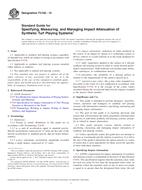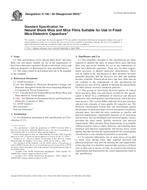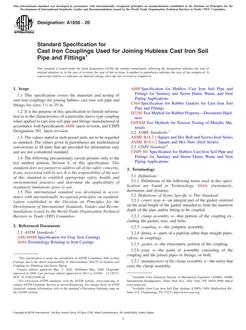1.1 Purpose-The purpose of this practice is to define good commercial and customary practice in the United States for conducting an environmental baseline survey (EBS) in order to determine certain elements of the environmental condition of federal real property, including excess and surplus property at closing and realigning military installations. This effort is conducted to fulfill certain requirements of the Comprehensive Environmental Response, Compensation and Liability Act of 1980 (CERCLA) section 120(h), as amended by the Community Environmental Response Facilitation Act of 1992 (CERFA). As such, this practice is intended to help a user to gather and analyze data and information in order to classify property into seven environmental condition of property area types (in accordance with the Standard Classification of Environmental Condition of Property Area Types). Once documented, the EBS is used to support Findings of Suitability to Transfer (FOSTs), Findings of Suitability to Lease (FOSLs), or uncontaminated property determinations, or a combination thereof, pursuant to the requirements of CERFA. Users of this practice should note that it does not address (except where explicitly noted) requirements for appropriate and timely regulatory consultation or concurrence, or both, during the conduct of the EBS or during the identification and use of the standard environmental condition of property area types.
1.1.1 Environmental Baseline Survey-In accordance with the Department of Defense (DoD) policy, an EBS will be prepared or evaluated for its usefulness (and updated if necessary) for any property to be transferred by deed or leased. The EBS will be based on existing environmental information related to storage, release, treatment, or disposal of hazardous substances or petroleum products on the property to determine or discover the obviousness of the presence or likely presence of a release or threatened release of any hazardous substance or petroleum product. In certain cases, additional data, including sampling, if appropriate under the circumstances, may be needed in the EBS to support the FOST or FOSL. A previously conducted EBS may be updated as necessary and used for making a FOST or FOSL. An EBS also may help to satisfy other environmental requirements (for example, to satisfy the requirements of CERFA or to facilitate the preparation of environmental condition reports). In addition, the EBS provides a useful reference document and assists in compliance with hazard abatement policies related to asbestos and lead-based paint. The EBS process consists of discrete steps. This practice principally addresses EBS-related information gathering and analysis.
Product Details
- Published:
- 02/01/2014
- Number of Pages:
- 22
- File Size:
- 1 file , 200 KB


